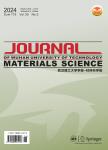Optimisation of Bio-polyol Production from Cassava Residue Using Ethylene Glycol as the Liquefaction Reagent
Optimisation of Bio-polyol Production from Cassava Residue Using Ethylene Glycol as the Liquefaction Reagent作者机构:Key Laboratory of Eco-materials Advanced Technology College of Materials Science and Engineering Fuzhou University
出 版 物:《Journal of Wuhan University of Technology(Materials Science)》 (武汉理工大学学报(材料科学英文版))
年 卷 期:2019年第34卷第4期
页 面:945-949页
核心收录:
学科分类:08[工学]
基 金:Funded by the National Natural Science Foundation of China(No.51503041) the Natural Science Foundation of Fujian Province,China(No.2018J01752)
主 题:cassava residue liquefaction bio-polyol ethylene glycol
摘 要:Cassava residue was liquefied by using ethylene glycol(EG), ethylene carbonate, propylene carbonate and polyethylene glycol(molecular weight: 400 g/mol) as the liquefaction reagent respectively at the temperature of 130-170 ℃ with sulfuric acid as the catalyst. The influences of liquefaction parameters, such as the type of liquefaction reagents, mass ratio of EG/cassava residue, liquefaction temperature and time on the properties of the products were discussed. The optimum liquefaction conditions were obtained when the mass ratio of EG/cassava residue was 6:1(w/w), the liquefaction temperature was 150 ℃, the liquefaction time was3 h and the mass fraction of concentrated sulfuric acid/EG was 2.5 wt%. The hydroxyl numbers and residue content of the liquefied products at optimal conditions were 1 137 mgKOH/g and 0.43%, respectively. FT-IR spectrum showed that the liquefaction product of cassava residue was polyether polyol and could be used to prepare polyurethane material or alkyd resins.



